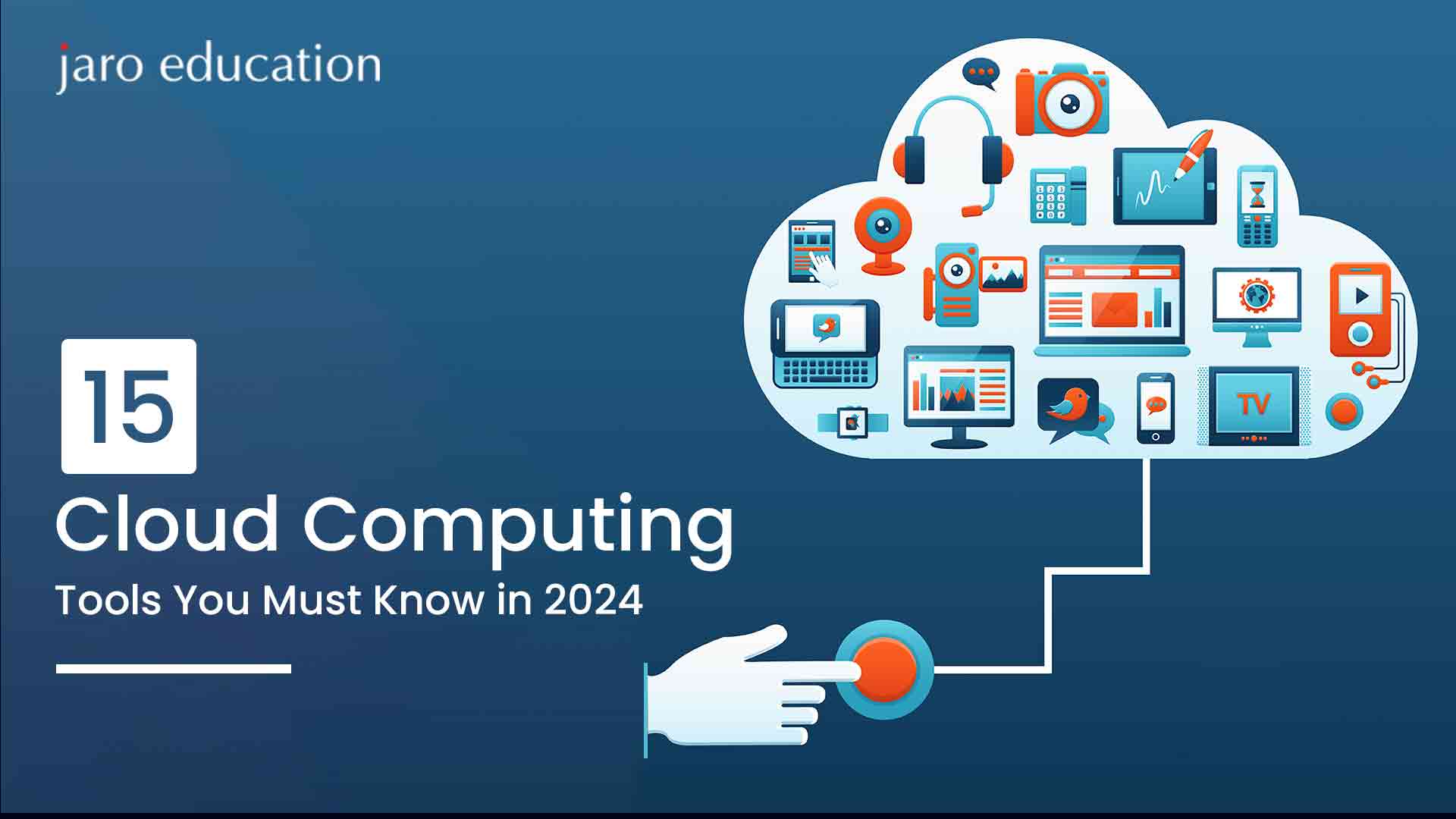What is Client Server Architecture? Components, Types, Examples Explained
Table of Contents
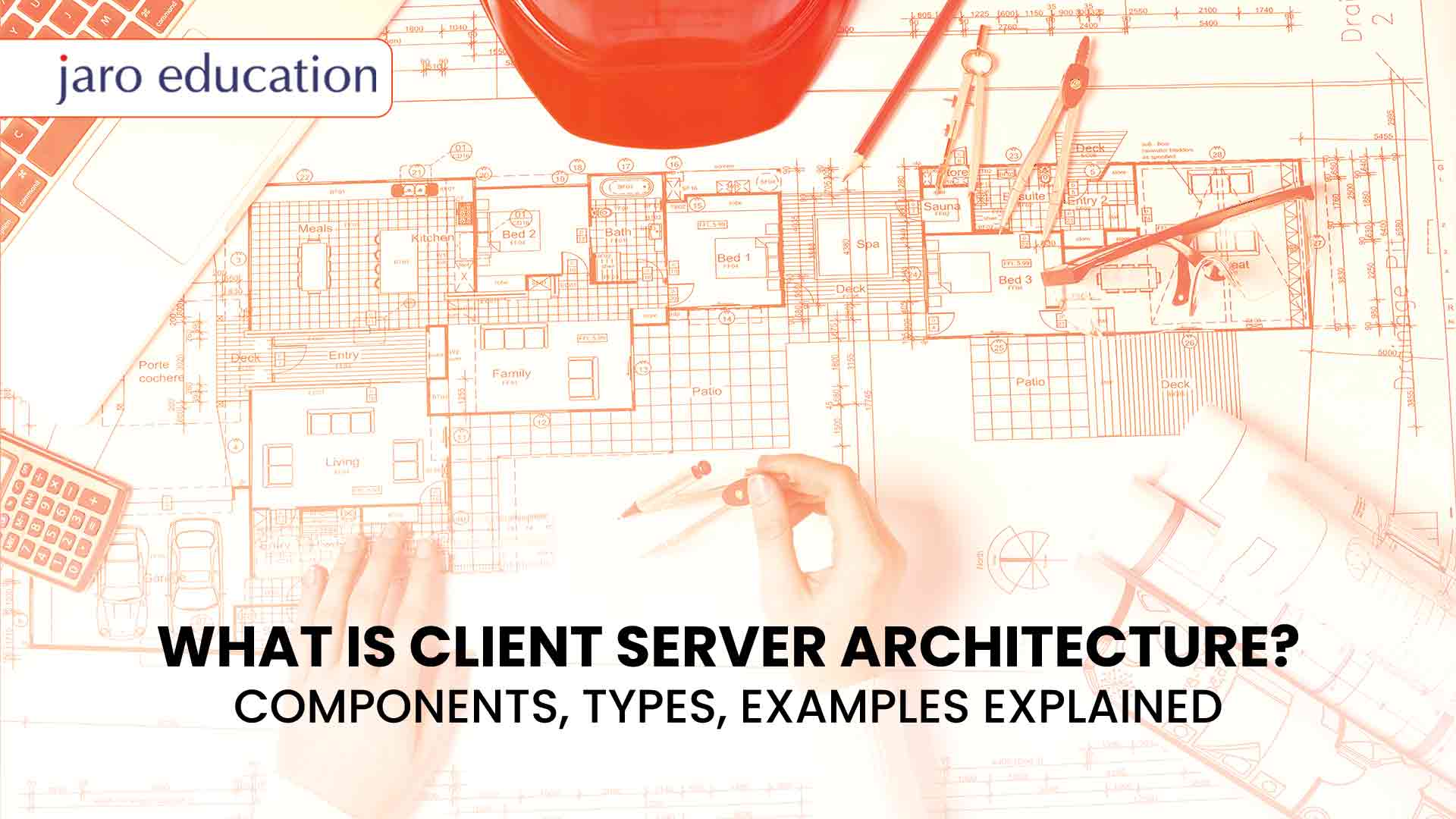
- jaro education
- 30, May 2024
- 11:06 am
The concept of client-server architecture can be decoded with the analogy of ordering a pizza. You call the pizza store, and someone takes your order, and then it is delivered to your doorstep. Like that in a client-server architecture, two factors are considered: clients and servers. Clients are the ones who make requests, and servers are the ones who process or provide the requests.
If you’re to explain client-server architecture, in simple terms, it is a computing model where the server hosts, provides and controls most of the resources and services required by the client. This notion is also referred to as the networking computing model since all the requests and services are supplied via a network. The client-server architecture connects other systems via networks and resources shared across different computers. Let’s learn about client-server architecture in detail.
Types of Client Server Architecture
There are commonly four types of client-server architecture, which are as follows:
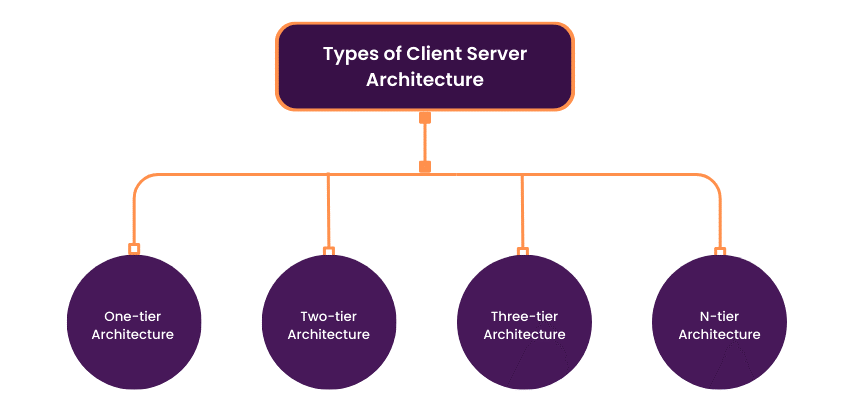
1. 1-Tier Structure
Business logic, data logic and the user interface in a 1-tier structure reside on the same system. Since both the client and server are on the same system, this client-server architecture is simple and affordable. However, the variety in data needs recurrent work. These systems save their data in a shared driver or local file. One-tier programs include MP3 players and Microsoft Office files.
2. 2-Tier Structure
Since there are no servers in between, the 2-tier structure offers the best performance environment. In this client-server architecture, the database is on the server while the user interface is on the client side. The databases and business logic can thus be stored either on the server or client end. If both are present on the client end, the structure will be called fat client-thin server architecture. If both databases and business logic are stored on the server end, it will be known as thin client-fat server architecture. Online ticket reservation systems often integrate a 2-tier structure.
3. 3-Tier Structure
A middleware is a 3-tier architectural component that allows clients and servers to communicate more easily. Despite its high cost, it’s rather simple to operate. The middleware improves both flexibility and performance. Both databases and business logic are housed in the middleware. The layers of a 3-tier architecture are the presentation layer (client tier), application layer (business tier) and database layer (data tier).
4. N-Tier Structure
The 3-tier client-server architecture is scaled down to the n-tier structure. In this case, the data processing, data organizing and displaying tasks are divided into independent layers. The isolation of the structure makes it easy to run and maintain. Moreover, this is also called “multi-tier architecture.”
Components of Client Server Architecture
Each architecture requires a few components to perform properly. There are a few components of client-server architecture, which are as follows:
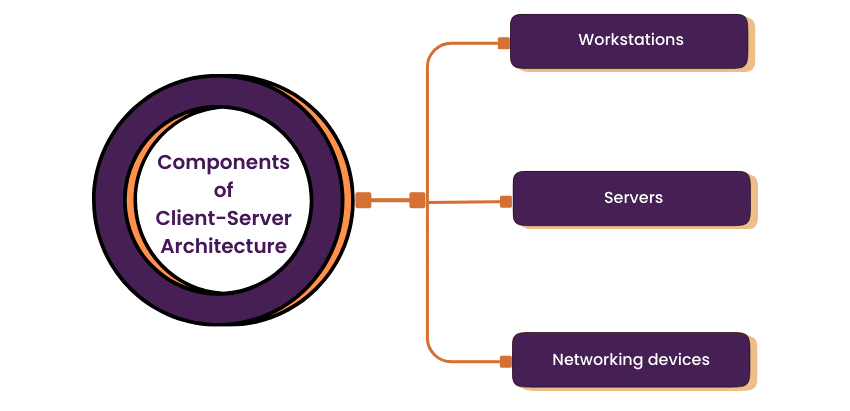
Workstations
Also known as client computers, workstations are first distinguished by their operating systems. Windows 2000, Windows Vista, Windows XP and Windows 7 are examples of workstation operating systems used in a client-server architecture. Their operating systems lack security and administrative controls, centralised databases and shared applications. They have localized programs and rules that can be applied separately. Since workstations don’t need to handle requests from many computers or store data from multiple sources, they have lower technological needs than servers in terms of memory, CPU performance and hard drive.
Servers
Servers are identified using different operating systems, including Windows 2000, Windows 2003 and Windows 2008. Since they store and manage a large number of (often concurrent) requests from workstations, they have more memory and hard drive space and faster CPUs. In a client-server architecture, the server performs several functions. It may work as a file server, domain controller, database server and mail server all at once.
A well-designed network, on the other hand, distributes these responsibilities among several servers in order to optimize performance. Regardless of its nature, a server is essentially a central repository for network files, programs, databases and laws. It makes maintenance and backup easier since it does not rely on individual user configurations and can be applied globally and consistently throughout the network.
Client
A client is any device that submits the requests to the server. When a person visits a webpage, he is accessing a website’s domain. In this case, the person becomes the client. IT experts use the terms thin, thick, and hybrid clients to characterize clients or server requesters. Thin clients rely on server resources and computer power to perform many of a device’s basic tasks.
Thick clients are devices that can do several tasks and handle large amounts of data without the need for a server. Hybrid clients are devices that can analyze data independently but rely on a server to store it for more complicated or repeated processing processes.
Real-World Examples of Client Server Architecture
It is a thing to think about what a client-server architecture application looks like in the real world. Here are three examples of client-server architecture that may occur more frequently than you realize.
File Servers
When users store files on the cloud like Microsoft Office and Google Docs, they need a file server. Many clients use file servers, which are central locations for file storage.
Email Servers
Email has replaced traditional business communication methods due to its ease and speed. These messages are transmitted and received between parties using email servers and specialized software from a variety of vendors.
Web Servers
Customers can access multiple websites hosted on these powerful servers over the internet. The client or user enters the required URL into the web browser. The browser searches the IP address and Domain Name System (DNS). The DNS server then locates the destination server’s IP address and presents it to the web browser. The browser that users are accessing would either make an HTTP or an HTTPS request. Next, the appropriate files are given to the user by the server or producer. Finally, the server then sends the files to the client/user, continuing the cycle.
What Are The Benefits of a Client-Server Architecture?
The benefits of client-server model are as follows:
Offers Centralization
A centralised server administration benefits a client-server network. This strategy makes it easier to update information, generate forms, and make files accessible to all employees by storing the data in a single area. IT professionals may freely review systems stored on an organization-wide server without engaging with users to test or resolve issues with an application or data file without visiting individual devices. Client-server architecture helps IT professionals monitor data from a single server to identify problems early. Centralization can minimize network redundancy in system records by replicating data.
Improves Scalability
Client-server architecture offers effective scalability alternatives, allowing organizations to flourish. It may scale vertically and horizontally. To accommodate increasing data demands, more hardware and equipment must be introduced. This may involve adding extra servers to increase the network’s processing capability and equally distribute the processing load.
Boosts Data Security
To develop cybersecurity measures, it is essential to centralize all information and keep it in a single server rather than on different devices, thus protecting the data from external threats. Furthermore, IT teams can back the company’s data on the servers to protect against data loss caused by system failure. This provides better data protection than peer computing, which requires backup at each workstation.
Enhanced Management
An organization’s data management system is supported by data centralization. They can view all papers from one area, making it easier to monitor task status and staff performance. In addition, you may save and retrieve files and other system data as needed. Client-server architecture also allows members to add features to the server via joint access without interfering with other processes. To manage several requests simultaneously, the centralized system employs a scheduling mechanism to organize client contacts. By leveraging these networks, companies can reduce maintenance costs while increasing corporate profitability.
How Does Client Server Architecture Work?
The main players in this architecture are clients and servers. They enable the communication process. To understand how client-server architecture works, it is important to understand the communication process between the two factors.
- Requests: Clients send requests to the server to notify it of events, like a user trying to log in with his credentials or requesting data, such as files.
- Response: The server responds to the client’s requests in the form of messages. This might, for example, be the result of an authentication.
- Service: A service is a specific job that the server makes accessible to the client for execution, such as downloading an image.
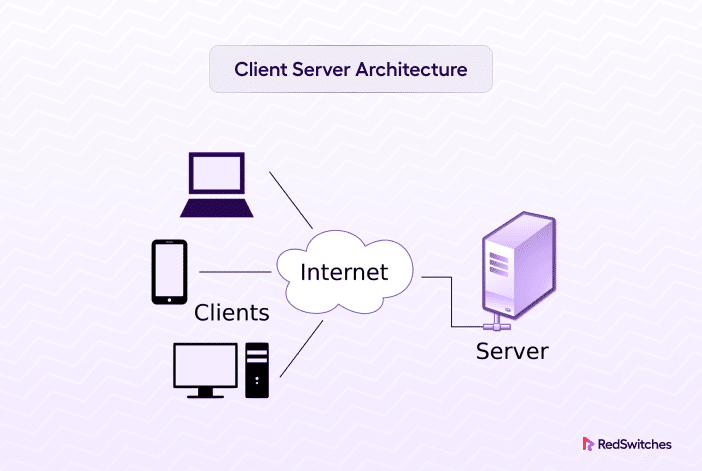
What Are The Features of a Client-Server Architecture?
The following are the features of a client-server architecture:
- Client and server devices often demand distinct hardware and software resources and are provided by various suppliers.
- A single computer server may deliver numerous services at the same time, but each service requires its own server program.
- The network has both horizontal scalability, which increases the number of client computers, and vertical scalability, which shifts the entire operation to more powerful servers or a multi-server arrangement.
- Client and server apps communicate directly, utilizing a transport layer protocol. This step creates communication, allowing the entities to transmit and receive data.
- Both client and server computers require a comprehensive protocol stack. Individual messages are sent and received using the transport protocol, which uses lower-layer protocols.
How Do Protocols Help in Client-Server Communication?
The most common protocol suite that clients use to connect with servers is TCP/IP. TCP is a connection-based protocol, thus it initiates and maintains a connection until the application programs on either end exchange messages. TCP protocols make the following easier:
- Determines the packetization of application data.
- Transfers packets to the network layer and receives packets from it.
- Oversees the flow of traffic management.
- Retransmits lost or scrambled packets as necessary.
- Acknowledges every packet that enters the network.
- TCP covers a piece of Layer 4 (transport) and a portion of Layer 5 (session) of the OSI communication architecture.
Conclusion
Modern computing is based on client-server architecture, ensuring efficient communication between clients and servers. From its attributes, it can be said that this paradigm promotes effective data sharing, scalability and centralized control by segregating it into essential elements and investigating its inner workings. The benefits of client-server architecture include increased security and resource optimization, demonstrating its utility in a wide range of applications.
Web surfing and email services are real-life examples of how client-server architecture works in our daily interactions with the digital world. Businesses and people rely on this architecture in this era of digital innovation to simplify operations and provide services to a global audience.
Since the world heavily relies on technology for easy processing of requests in every industry, companies are looking for professionals who would manage the process of communication between clients and servers, for instance, IT teams. If you want to be ace as an IT professional, irrespective of the industry, you can consider pursuing an Executive Program in Artificial Intelligence and Cyber Security for Organizations [EPAI&CSO] from IIM Indore. It is a 10-month programme that provides early-career IT professionals, engineers and project managers with a comprehensive training initiative to understand and combat the cyber threats organizations face today. With its multi-disciplinary approach, candidates can gain insights into machine learning, data transformation, cybersecurity fundamentals and big data analytics.







